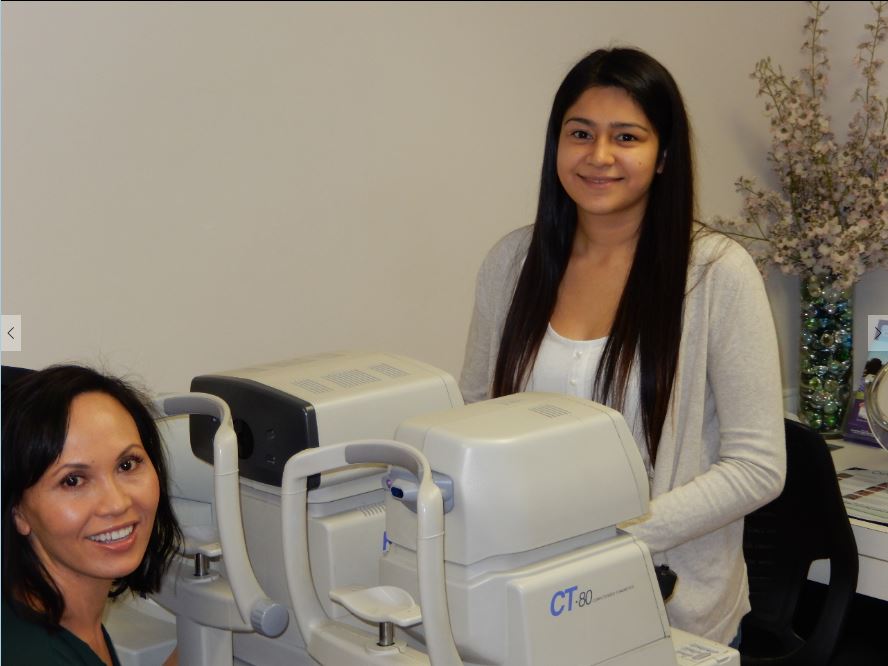OUR EYE EXAM IS COMPREHENSIVE AND PROFESSIONAL

Our eye exam can be divided into many different parts and includes many different measurements. The different parts of the eye exam together give us a fuller picture of your eye vision status and your eye health status. With this information, we can best meet your eye care needs.
Below is a summary of the different components of our eye exam in the order in which they are usually performed.
1. Case History
This is often the most important part of the eye exam. This involves asking you questions and listening to your answers. It gives us information about how you are currenty seeing and how you use your eyes. In specific cases such as red or irritated eyes, it helps us to find the root cause of the problem so we can best treat your condition.
2. Lensometry
We measure the prescription in your current glasses.
3. Autorefractor/Autokeratometer
This machine automatically measures your nearsightedness or farsightedness and your astigmatism. It also measures the curvature of your eye. This is especially valuable in fitting for contact lenses.
4. Tonometry
This is commonly known as the "eye pressure" test. It measures the fluid pressure in your eye. Having a high eye pressure reading can be a risk factor for developing glaucoma.
5. Automated visual field testing
This machine measures your central and peripheral vision in at least 20 different locations in your visual field. Visual field loss is often connected with different eye and systemic diseases.
6. Vision with correction and vision without correction
We check your vision with and without glasses or contact lenses which gives us valuable baseline information.
7. Pupil and Eye Movement Testing
We check your pupil responses to light and your eye tracking. Poor pupil responses or poor eye movements are often related to neurological or eye diseases.
8. Cover Test/NPA/NPC
We measure if your eyes are straight or crossed and if both eyes are working well in focusing together. In children especially, having an eye turn can cause that eye to become permantly lazy or weak.
9. Ishihara Color Test
Color Vision problems are sometimes a sign of optic nerve disease.
10. Subjective Refraction
This is when we ask you, "What looks better? .. lens one or lens two?" The autorefractor already gave us an automated estimation of your eye prescription. The subjective refraction is even more important because it helps us determine what prescription you will actually see best with.
11. Slit Lamp Exam
This is a special microscope that helps us examine your different eye structures and eye health in detail. It magnifies your eye up to 25 times its actual size. With this instrument, we can examine in detail the structures of the front part of the eye. The slit lamp with the aid of a hand-held magnifying lens also allows us to examine the back of the eye in detail
12. Fundus Exam
The fundus is the back part of the eye. Many eye diseases such as glaucoma, macular degeneration, or retinal diseases occur at the back of the eye. This is why it is helpful to dilate the pupils bigger with drops because it allows us a much larger view inside and into the back of the eye.
It is recommended that you perform an automated visual field test and have your eyes dilated for the most thorough eye health exam. Ultimately though, you have the right to decide whether or not you get your eyes dilated. In some cases, Dr. Dinh will refer his patients to a specialist for further testing or treatment if needed.
PRESCRIPTION RELEASE
We always give you your eyeglass prescription at the conclusion of your eye exam. For contact lens exams, We give you both your contact lens and eyeglass prescription.